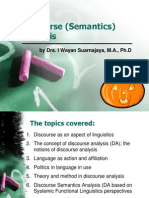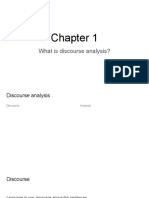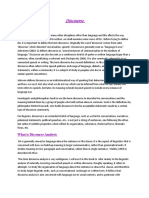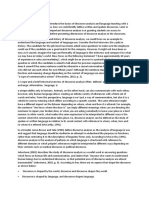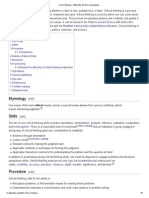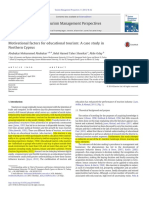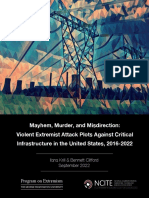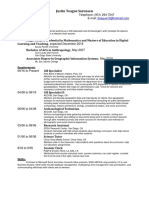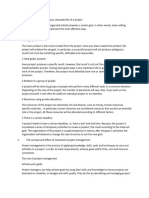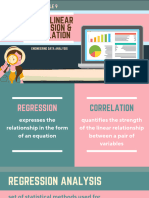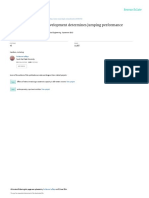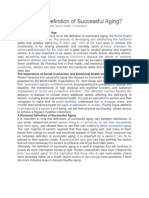0% found this document useful (0 votes)
45 views8 pagesDiscourse
The document discusses discourse analysis and related concepts through multiple choice and short answer questions. It covers topics like influential linguists, the emergence of critical discourse analysis, the focus of discourse studies, speech acts, discourse structures, cohesion, and power relations. Key aspects covered include contextual analysis, coherence, ideology, and conversation analysis.
Uploaded by
Shan KhanCopyright
© © All Rights Reserved
We take content rights seriously. If you suspect this is your content, claim it here.
Available Formats
Download as PDF, TXT or read online on Scribd
0% found this document useful (0 votes)
45 views8 pagesDiscourse
The document discusses discourse analysis and related concepts through multiple choice and short answer questions. It covers topics like influential linguists, the emergence of critical discourse analysis, the focus of discourse studies, speech acts, discourse structures, cohesion, and power relations. Key aspects covered include contextual analysis, coherence, ideology, and conversation analysis.
Uploaded by
Shan KhanCopyright
© © All Rights Reserved
We take content rights seriously. If you suspect this is your content, claim it here.
Available Formats
Download as PDF, TXT or read online on Scribd
/ 8











